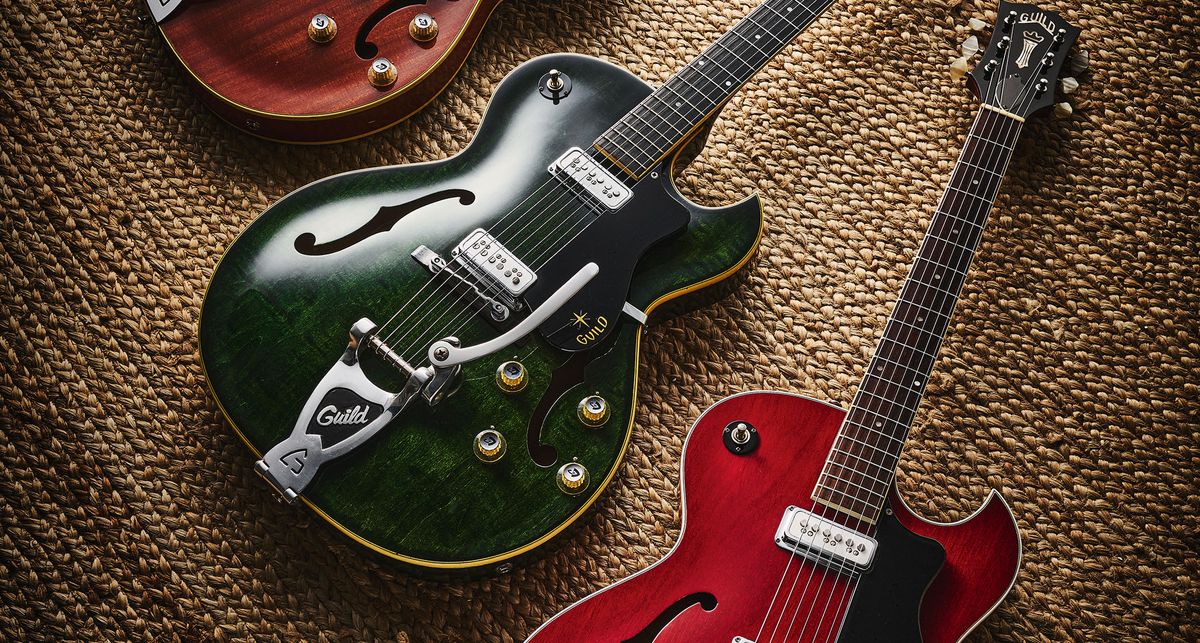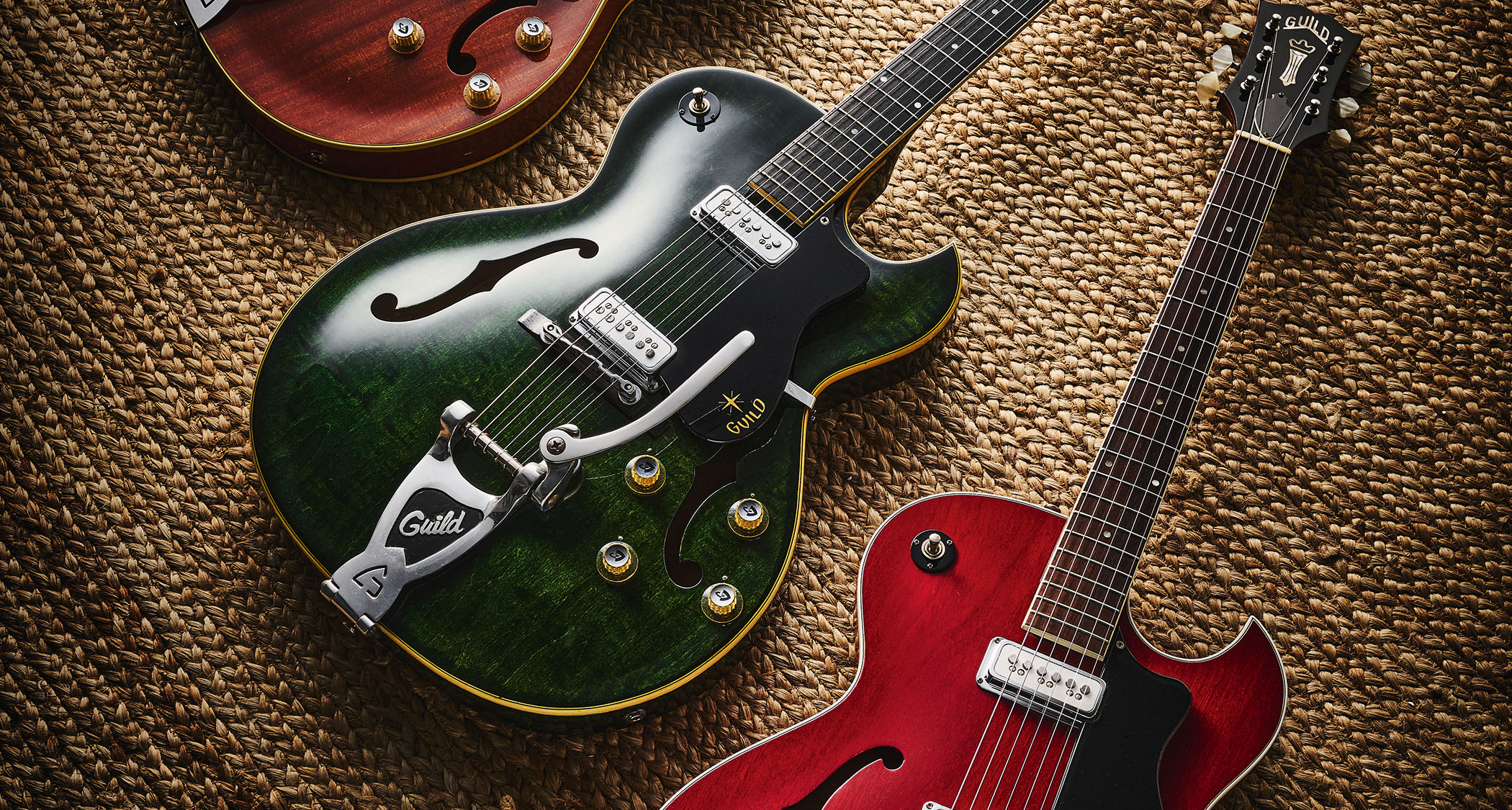Since its birth in New York in the early 1950s, Guild had established itself as a serious player in the US guitar-manufacture scene. Jazz was still the dominant serious musical force and, indeed, was where most makers made their reputations.
Gibson, Epiphone, and Gretsch were all competing with fine archtops, but things were changing fast. Rock ’n’ roll was usurping the easier listening of the early ’50s, though early rock ’n’ roll players often played full-bodied archtops – think Scotty Moore with Elvis, Bill Haley’s Franny Beecher, or Eddie Cochran.
Just as the volume of dance-band horn sections drove the addition of electric pickups to archtops, so modern tastes and bigger venues demanded louder tones – and Fender, Gibson, and others swept in with solidbodies that suppressed the resulting acoustic feedback.
By the late ’50s, Gibson had launched its range of thinline Electric Spanish (ES) models to notable success. Other makers naturally followed, so competition was fierce and endorsements from leading players often hard-fought.
Relative to average earnings, guitars were much more expensive than today, so as a consumer market developed, a key focus was affordable entry-level and mid-priced instruments. And so Guild launched its Starfire range into the world in 1960.
The Starfire was emphatically not entry-level nor pitched at students as, say, the Les Paul Junior had been. From its first catalog appearance, it was positioned as a serious guitar for younger artists, away from the dusty archtops the older jazzer types used. The catalog proclaimed the instrument to be: “For the young artist with a flair for showmanship!”
Guitar of the Day: 1964 Guild Starfire III | Norman’s Rare Guitars – YouTube

In terms of shape, the first Starfires were modeled on the Guild Capri CE-100 (introduced in 1956) – the first Guild with a Florentine (sharp) cutaway – but used the thinline body depth of the Slim Jim T-100 and T-100D, introduced in 1958.
While it aimed to pitch itself apart from its forebears, the Starfire was still fully hollow and – taking another cue from Gibson – was launched in a rich Cherry Red boasting a “slender, fast-action” reinforced mahogany neck with rosewood fingerboard.
The simplest variant, the Starfire I, had a single pickup at the neck. The Starfire II had the popular twin-pickup layout with individual volume and tone controls, and a third model, the Starfire III, added a Bigsby True Vibrato tailpiece.
Other finishes were soon offered – with Emerald Green, Honey Amber, and Ebony Grain options. A couple of special-order white models turn up in pictures of the time, too.
Sixties Stars

The examples we’ve photographed here are II and III variants of the model. First is the Cherry Red Starfire III, whose case literature suggests it was shipped on April 14, 1961. The top is laminated maple, which is unusual because Guild more typically offered Cherry finishes over laminated mahogany.
Next up, a 1961 Starfire III is seen in a rarer Emerald Green over a laminated maple top, the typical wood beneath the Green and Ebony Grain finishes that were offered. Finally, we have a super-rare 1962 Honey Amber Starfire II, which is actually a clear finish (now slightly aged) over the sapele variant of mahogany with its distinctive wide figure.
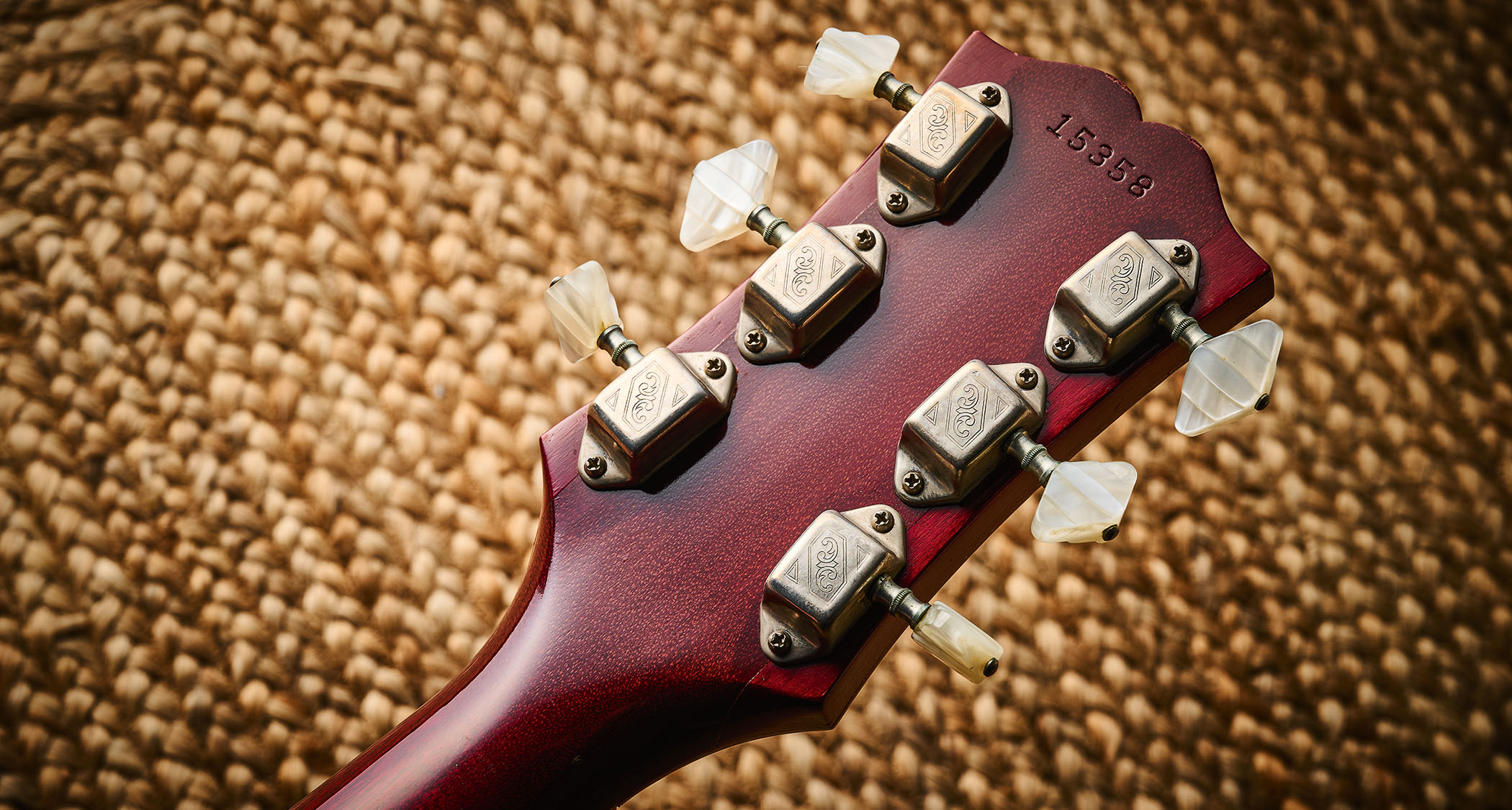
Each of these guitars is in great condition, though the Cherry and Emerald examples give a glimpse into the issue that Guild was known to have at the time of getting its finishes to adhere and remain stable. As a result, some playing wear has caused the finish on the backs to lift slightly along the grain.
The color and figuring, especially on the back of the Emerald model, are stunning. It evokes Epiphone’s (by then Gibson-owned) entry-level single-pickup Coronet solidbody in Silver Fox, an olive/grey finish with white pore-filler highlights (black Starfires often fade to a dark, slightly murky, grey).
The neck heel of the Honey Amber Starfire II is decorated with a pearloid plate, whereas both the IIIs’ backs extend right over the neck heel, an unusual feature usually seen on higher-end classical guitars to add strength.

This is something that also appears on other Guilds of the time: for example, the small-bodied Economy M-20 acoustic made famous – if never actually played – by the iconic Nick Drake on the cover of his second album, Bryter Layter.
The back-painted clear plastic pickguard on each of the models is an earlier version that has a smoothly curved bottom edge. A straighter ‘stairstep’ contour appeared in 1963, and the icon above the brand legend evolved from an inverted arrowhead to different starbursts over time, too.
The headstocks all display the ‘lip top’ shape common to Guilds until they were changed to a ‘raised center’ in 1964. All have the ‘Chesterfield’ inlay that was used on mid-range models. The earlier Cherry example has the typical plastic truss rod cover of the time, while the Emerald and Honey Amber Starfires each have more unusual thin metal versions that are engraved with the model name.
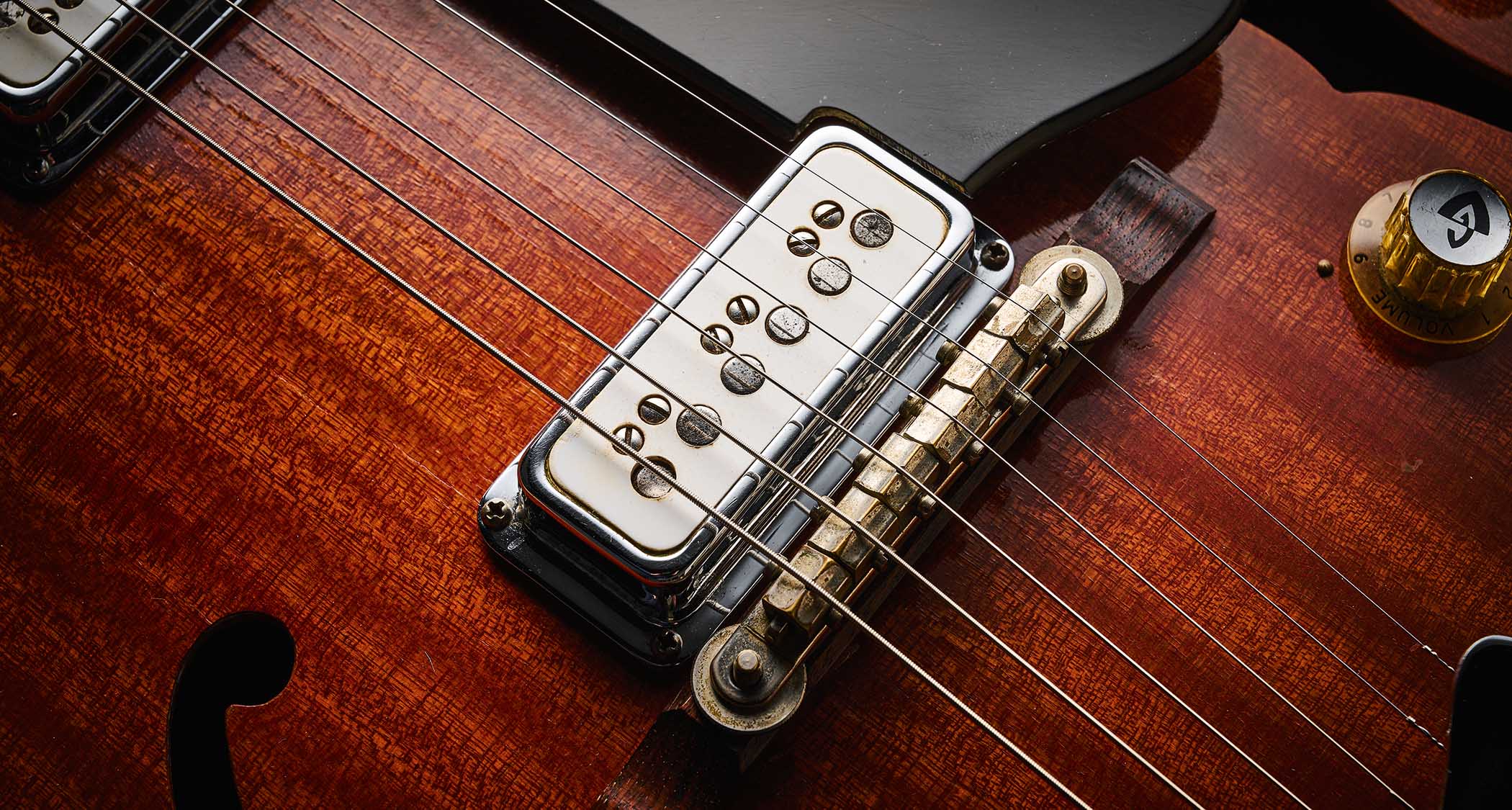
On to hardware – the Bigsby B3-type vibrato tailpieces on the III models carry a ‘Guild Spec’ legend underneath, while the Honey Amber II has the harp-shaped tailpiece that was common to many Guilds of the time.
The Bigsby bridges accompanying the vibrato units rock on their metal bases to help shift pitch as the arm is moved. The fixed intonation points on the bridge, also seen on Gibson’s stop tailpieces of the time, reflect the then-widespread use of a wound third string.
If vintage-correct, these guitars are best strung with wound third strings whose intonation points sit some way short of a modern plain third’s. The Honey Amber’s bridge, which closely resembles a tune-o-matic in style and function, is an Adjusto-Matic made by Hagstrom in Sweden.
The tuners on the Honey Amber and Emerald models are Grover Sta-Tite units in what’s now called the Waverly style. The smooth and more ornate German Kolb tuners on the Cherry example were an optional upgrade that became more common across the ’60s.
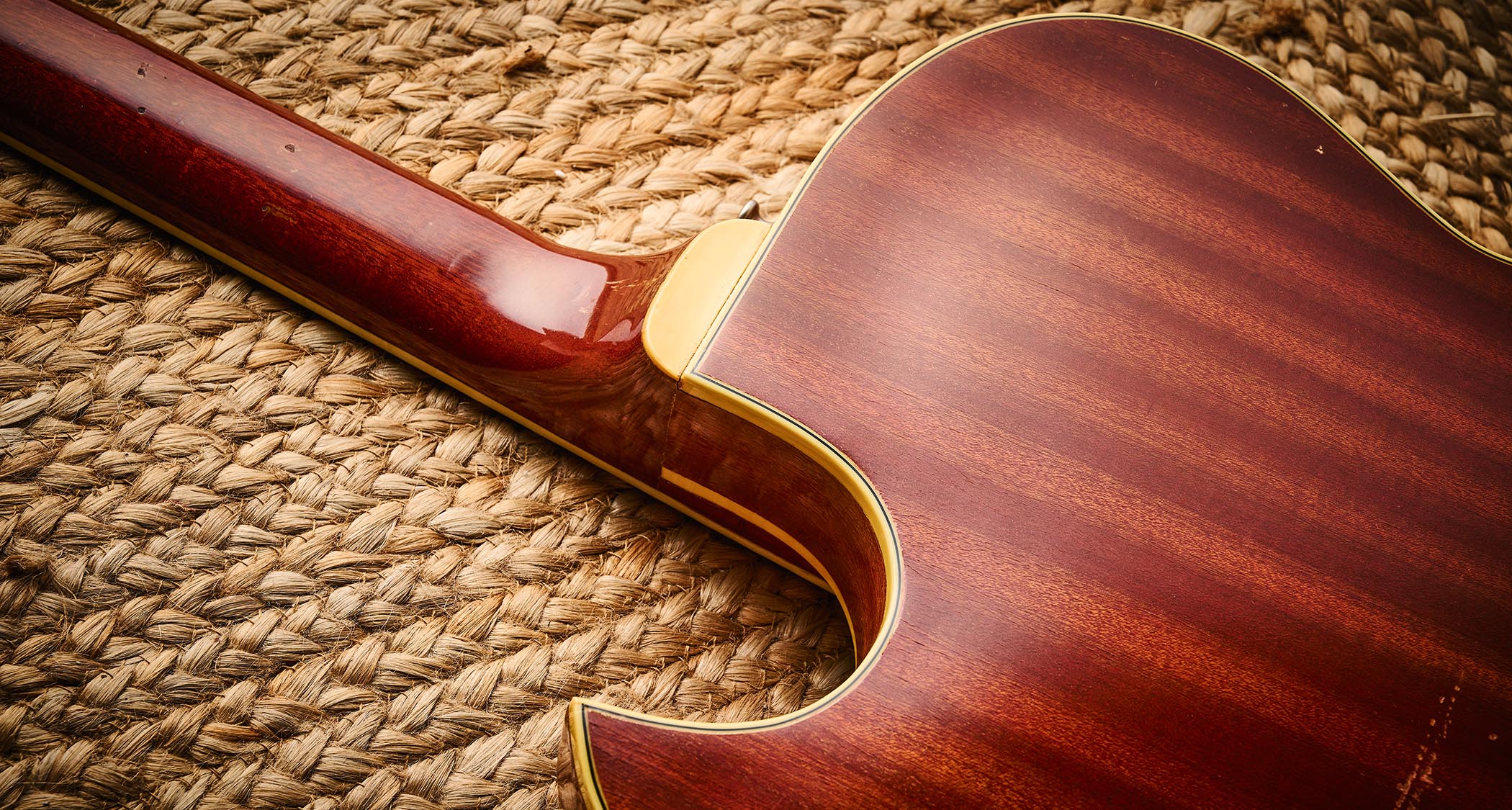
Most 1950s Guild electrics sported pickups made by Franz (a company then based in Astoria, New York) that resembled (but sounded quite different from) Gibson’s celebrated and enduring P-90. Instead, the very first Starfires had a white-faced single-coil pickup with six slot-head screw polepieces. Only the earliest Starfires had these, probably less than 150 pieces. Hans Moust’s definitive book on Guild says these pickups were made by DeArmond.
Thereafter, Starfires were among several Guild models to feature DeArmond Dynasonics, not long after Gretsch forsook them for its own now-celebrated Filter’Tron humbucking pickups.
Gretsches had black Dynasonics, and Guilds had white ones; the riser shims beneath the pickups are cream-and-black-striped laminate. All Starfire variants carried Dynasonics until Guild, too, introduced its own version of humbuckers – the virtually mini-humbucking sized ‘Anti Hum pickups’, as they were called – in 1963.
Guitar of the Day: 1967 Guild Starfire V | Norman’s Rare Guitars – YouTube

By the end of 1964, Guild had added the double-cutaway Starfire IV and fancier V and VI designs to the catalog – which aped Gibson’s ES-335 models – and featured a double-cutaway outline and a feedback-reducing center block.
Single-cut Starfires appeared in the hands of famous players such as The Kinks’ Dave Davies and Grateful Dead’s Jerry Garcia
Meanwhile, the Starfire XII 12-string joined the ranks in 1966, as did the single-pickup bass guitar, with the double-pickup Starfire II bass following in the 1967 catalog.
Guild’s UK profile in the 60s was disproportionate to its scale due to distribution by leading instrument and sheet music distributor Boosey & Hawkes.
Single-cut Starfires appeared in the hands of famous players such as The Kinks’ Dave Davies and Grateful Dead’s Jerry Garcia, and you’ll hear the instrument on Mike Mitchell’s solo on The Kingsmen’s Louie, Louie.
Plenty of players also embraced the later centred-blocked double-cut Starfires such as blues greats Buddy Guy, Lightnin’ Hopkins, and Robert Lockwood Jr. Hans Moust went as far as saying that the double-cut Starfires were “by many players, considered the ultimate blues guitar.”
- This article first appeared in Guitarist. Subscribe and save.






